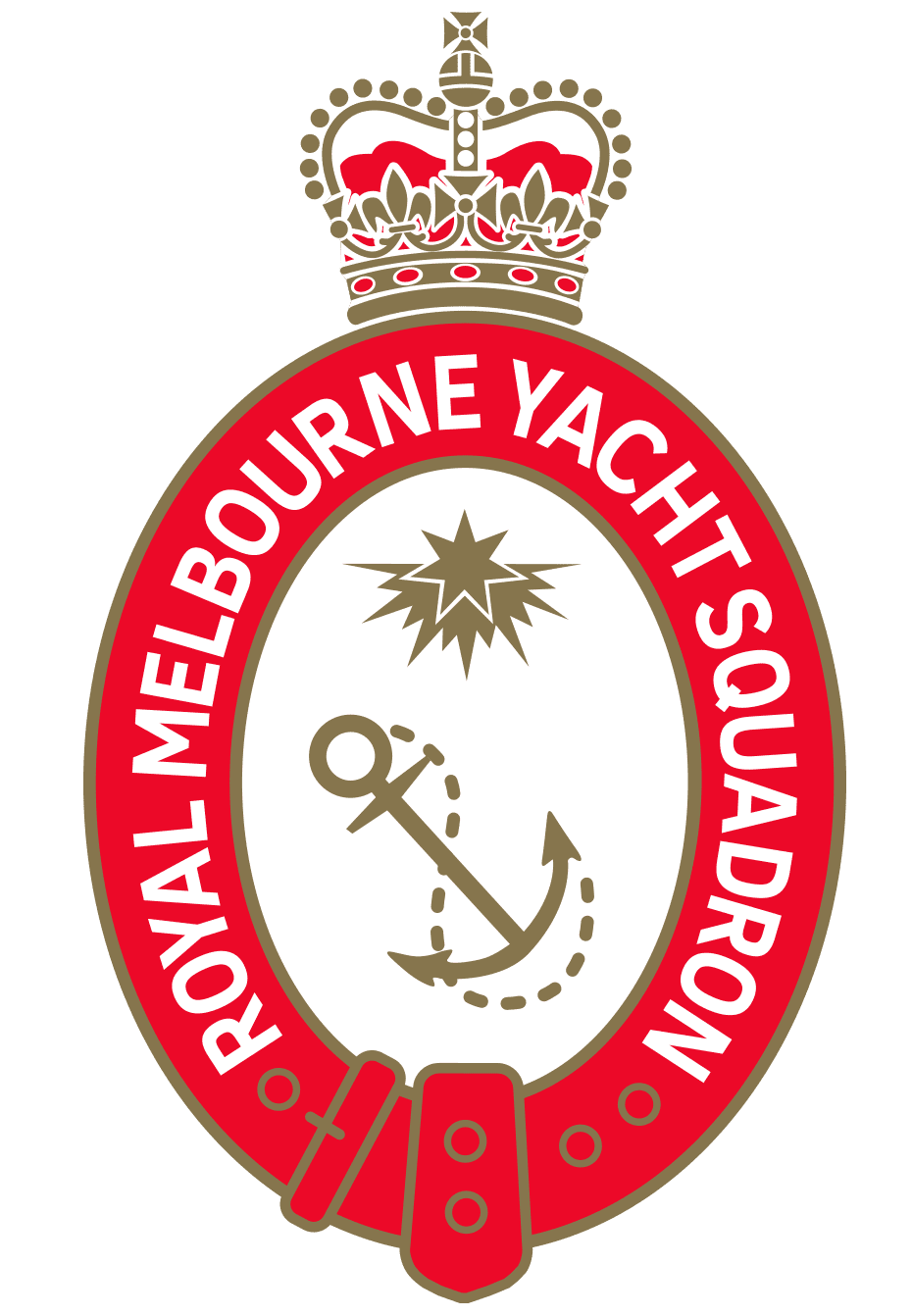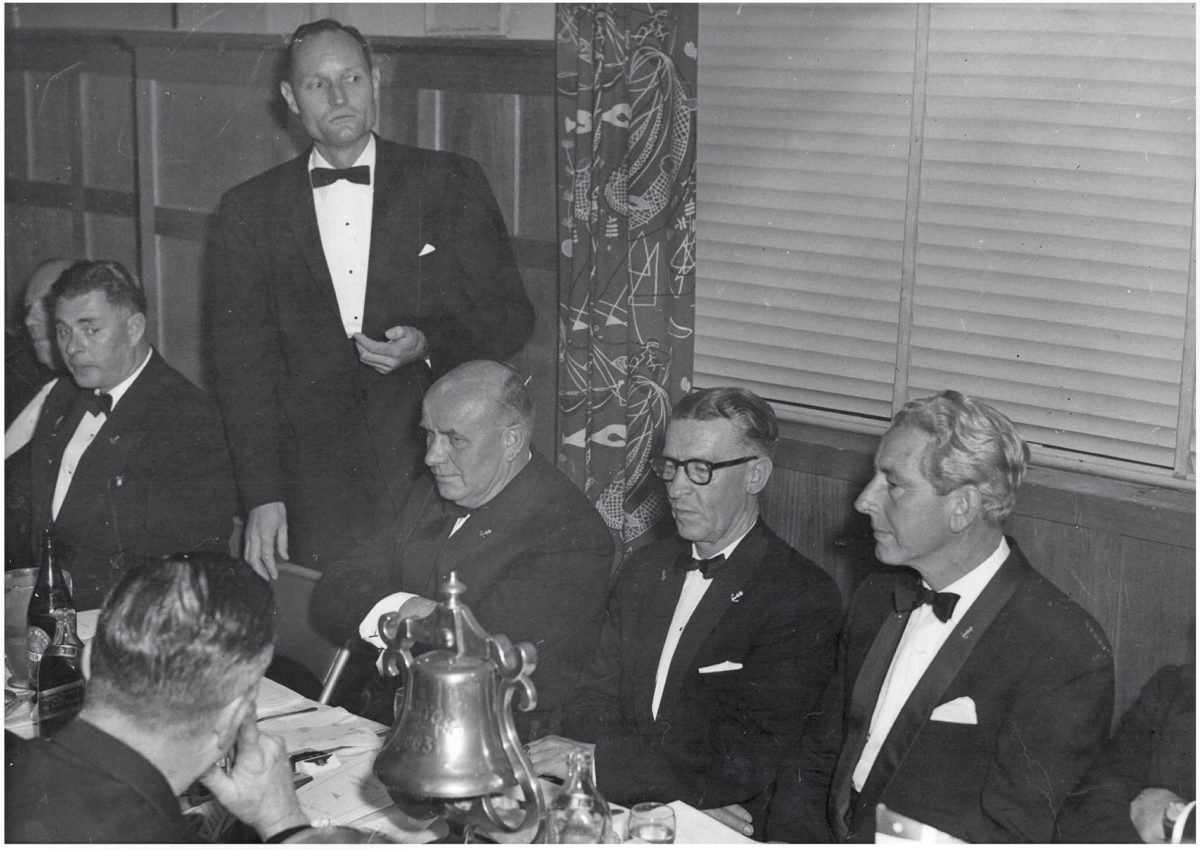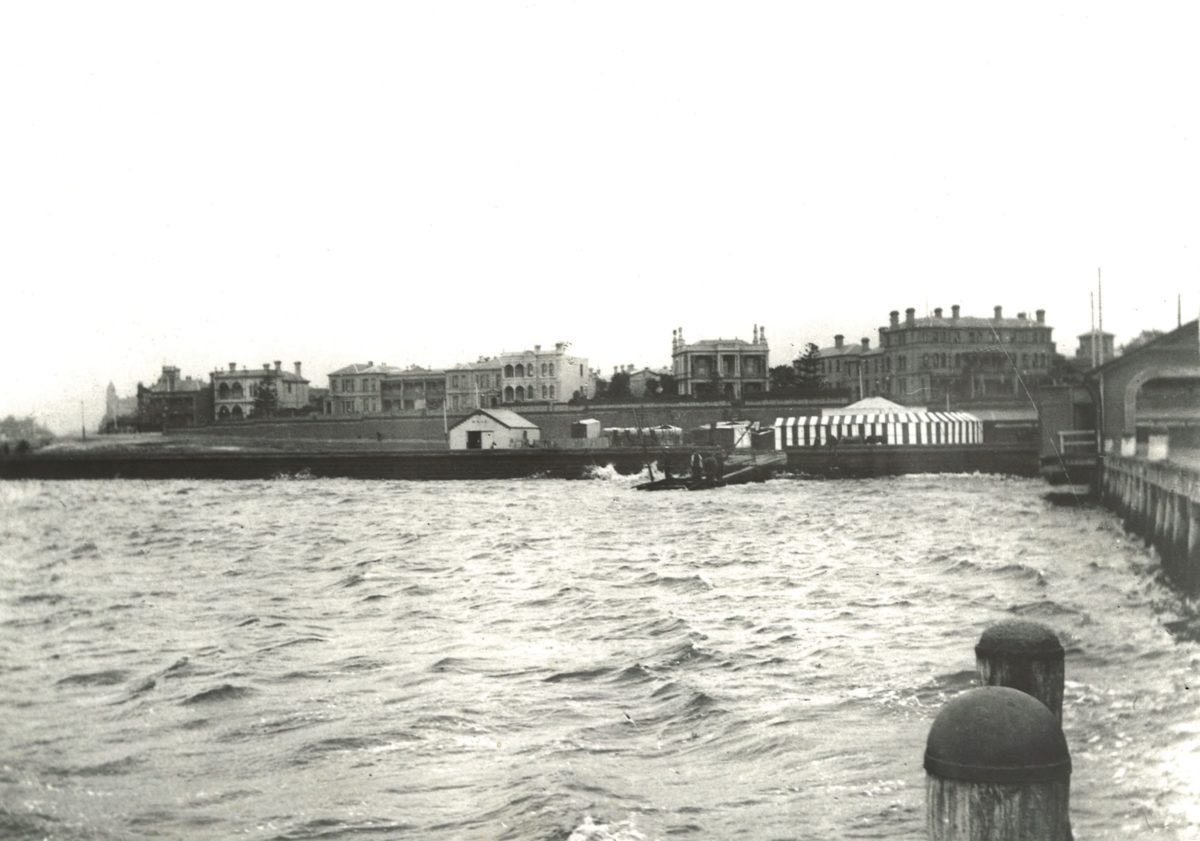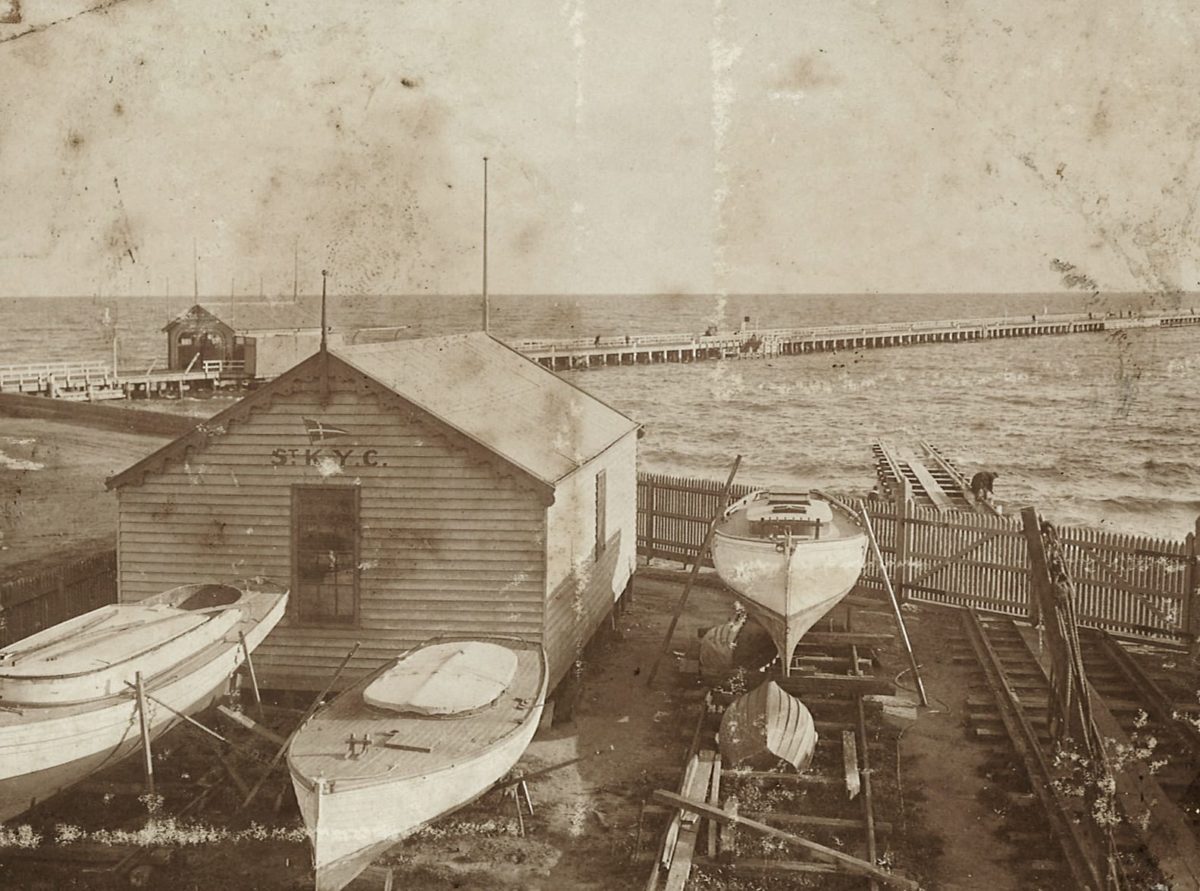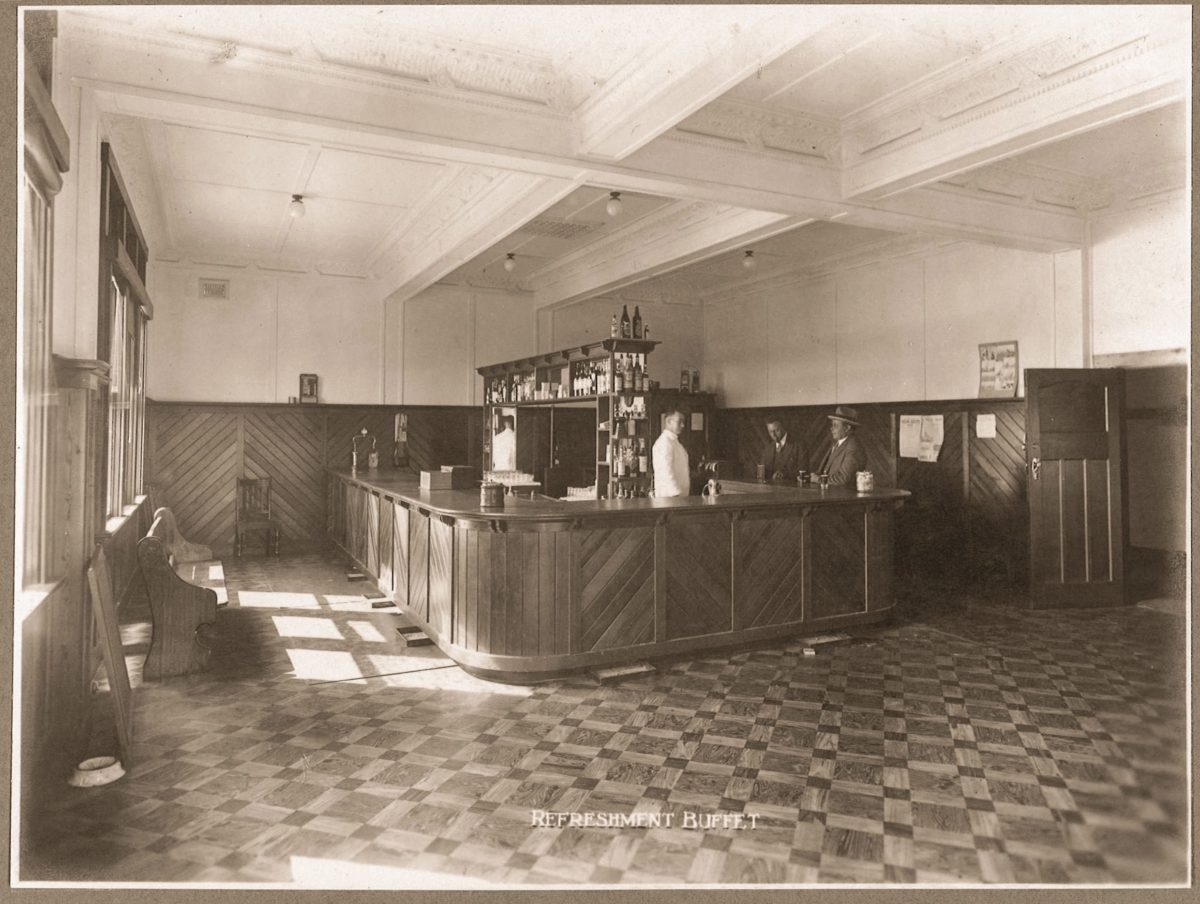FOUNDED 1876
BY WARRANT
Dated 27 March 1924
Under the Seal of Office of the Lord High Admiral of the United Kingdom of Great Britain and Ireland etc., Members of the Royal St Kilda Yacht Club are permitted to wear on board their respective vessels the Blue Ensign of His Majesty’s Fleet, on certain conditions, as laid down in the said Warrant.
BY DESPATCH
Dated 9 April 1924
His Majesty King George V has been graciously pleased to bestow the title ‘Royal’ upon the St Kilda Yacht Club.
BY DESPATCH
Dated 26 June 1961
Her Majesty Queen Elizabeth II has been graciously pleased to approve the change of name to Royal Melbourne Yacht Squadron, which became effective on the 6 November 1961 when it officially merged with the St Kilda 14ft Sailing Club.
The Royal Melbourne Yacht Squadron, with a history of over 140 years, is one of the oldest yacht clubs in Victoria with a long list of historical firsts. Situated at St Kilda in close proximity to the Melbourne central business district, it is regarded as the centre of aquatic events in Victoria.
Most major championships have been held off its shores and the Squadron was the control centre for the 1956 Melbourne Olympic yachting events, as well as the 1999 Laser World Championship.
The Squadron had its beginnings in the early 1870s when a small group of yachtsmen and occasional fishermen gathered at St Kilda beach. Where there are yachts, there were challenges, and soon informal races started.
By 1876 the group became the St Kilda Sailing Club, with approximately 20 members and Robert Hill as Commodore. The annual subscription was ten shillings.
During season 1879-80 and with a bank balance of over seventeen pounds, plans for a club shed were submitted to Council; however strong opposition from St Kilda residents ended that plan.
Membership grew to 44 in the 1881-82 season and with a bank balance of thirty nine pounds, Louis Meyer again took up the question of a clubhouse. But his efforts were to no avail, because the Council again objected to the plan.
At the Annual Meeting on September 1884, with the desire to place the Club in a premier position , it was moved to change the name from St Kilda Sailing Club to the St Kilda Yacht Club. It was also decided to extend the tonnage limits to allow larger yachts to participate in races.
Louis Meyer never gave up negotiations for a club site and in December 1885 his persistence was rewarded when the Lands Minister provided a ‘Free Grant Site’ on West Beach. A weather board club shed designed by Sydney Wilson was later built on the site, at a cost of one hundred and twenty pounds.
By 1890, St Kilda Yacht Club had 200 members and 25 yachts on the register. By weight of members this made it the strongest on Port Phillip. Improvements made at the time included connection to the water main, a cold shower for members and a fence around the premises.
In 1894 it became apparent that the club would have to build a slipway suitable for slipping larger yachts. An application was lodged by Commodore Meyer for a more convenient site closer to the pier. In September 1895 this was granted by the Crown.
During 1904 the construction of the Club’s slipway began at the new site. It became necessary to proceed immediately with the erection of a clubhouse.
Designed by a member, J.P. Kennison, the two-storey clubhouse was build by Adams Bros. at a cost of 629 pounds. The clubhouse was formally opened by Past Commodore Louis Meyer on 24th June 1905, making St Kilda Yacht Club one of the first yacht clubs in Australia to have an on-site clubhouse. Eighty two members joined the services during World War I. Six were killed. In January 1920, a tablet was unveiled by the Mayor of St Kilda Councillor T.G. Allen, bearing the names of the members who lost their lives during the War.
In August 1919 the St. Kilda Yacht Club had unsuccessfully petitioned for the right of the prefix ‘Royal’. They again petitioned with the backing of Lord Forster in April 1923. The club was advised in May 1924 that His Majesty, King George V, had conferred on the Club the prefix ‘Royal’.
By this time the Club had 284 members and was becoming very cramped so the battle for more land started again.
The erection of an imposing two-storey building was commenced in 1926. The Foundation Stone was laid by the Governor-General Lord Stonehaven. To mark the Club’s Golden Jubilee the new clubhouse was opened on 23 October 1926.
Soon after the opening, more than 1,200 members and visitors were at the Club when the Duke and Duchess of York (later King George VI and Queen Elizabeth) landed at St Kilda.
World War II saw 140 members enlist in the various services. By the end of the War, 10 had been killed in action.
Ladies, who in the past were restricted to the visitors room, were finally permitted into the lounge in May 1940 although they were not to be served liquor.
1956 was a big year for the Club. It was the Executive Headquarters for the yachting section of the Melbourne Olympics. The victory ceremony and presentation of medals took place on the lawns on 6 December 1956.
Discussions began in 1961 on the possible amalgamation of the St Kilda 14 Foot Sailing Club with Royal St Kilda Yacht Club. In the meantime the Club was negotiating through the Government for a name change.
The Club was advised through the Governor General’s Office, that from 26 June 1961, Her Majesty the Queen approved the club’s change of name to the ‘Royal Melbourne Yacht Squadron’.
It was agreed that the name change was to be effective from Cup Eve, 6 November 1961, when the club officially amalgamated with the St Kilda 14 Foot Sailing Club.
There have been many famous yachts based at the Squadron over the years. An equally promising future seems assured as committee and members take seriously their obligation to respect its traditions while striving wherever and whenever possible to improve the sailing experience for generations to come.
A multi-million dollar investment improving an already exceptional clubhouse experience, and the opening of the magnificent floating marina in February 2014 have helped place RMYS as one of the most progressive and forward-thinking clubs to be found not only in Victoria, but in the whole of Australia.
